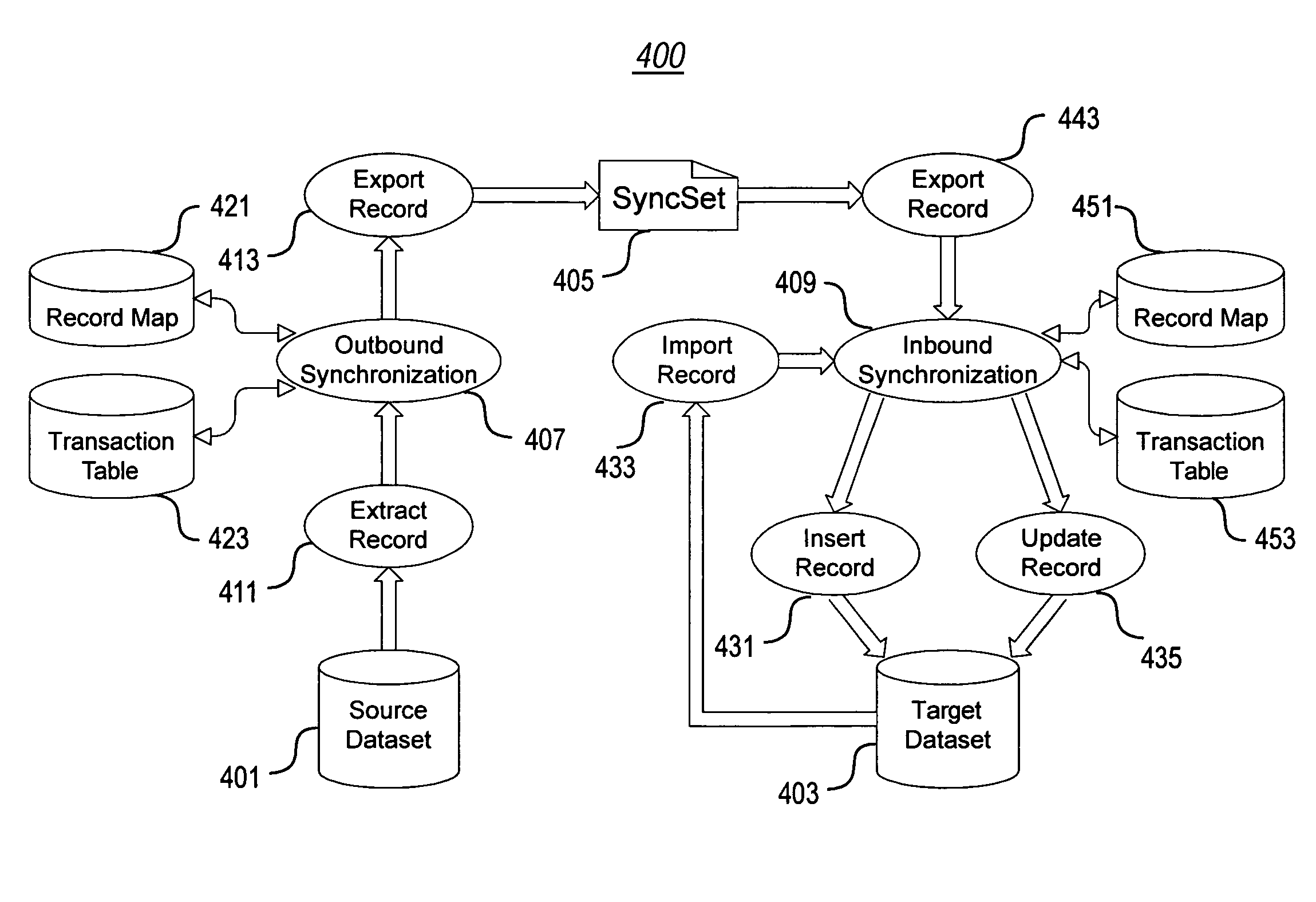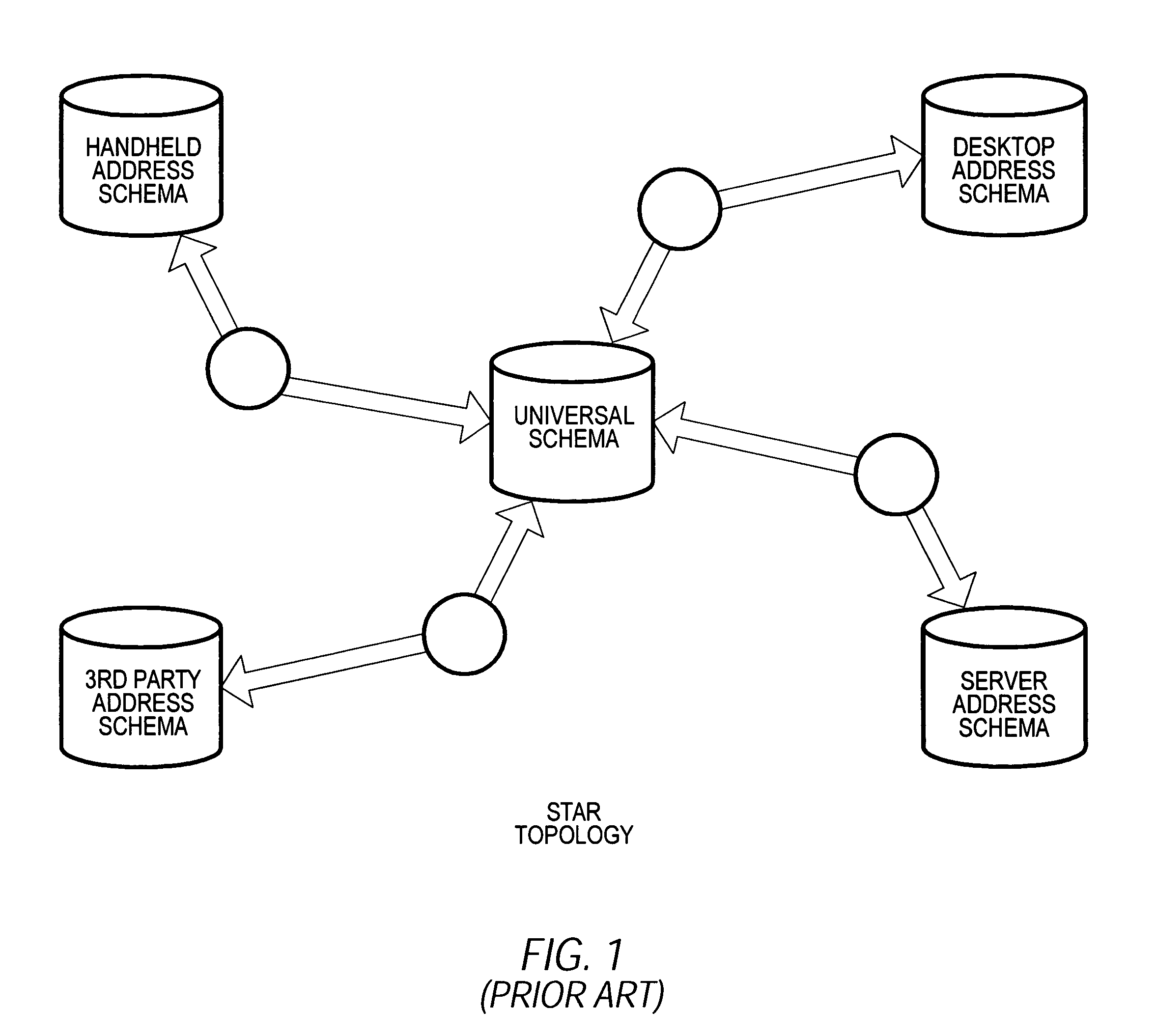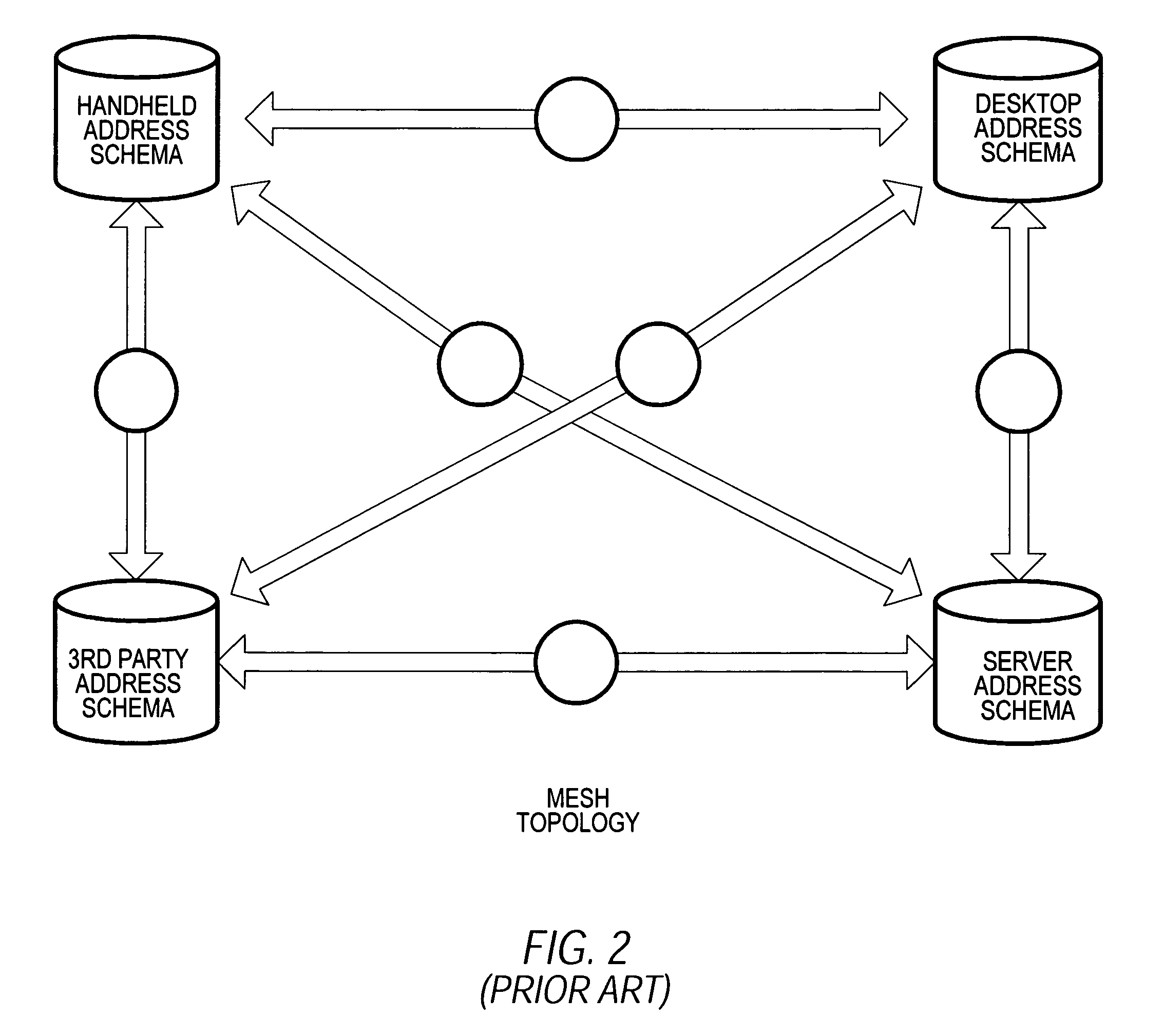System and methods for synchronizing information among disparate datasets
a technology of disparate datasets and systems, applied in the field of information or dataset management, can solve the problems of disparate information among disparate devices, inability to communicate well with desktop computers, let alone with each other, and simple approach, and achieve the effect of overwriting a target datas
- Summary
- Abstract
- Description
- Claims
- Application Information
AI Technical Summary
Benefits of technology
Problems solved by technology
Method used
Image
Examples
Embodiment Construction
Synchronization System and Methodologies
[0024]A. Introduction
[0025]Many applications, such as personal productivity applications as Internet Sidekick® and HomeLife™, have datasets (e.g., address books and calendars). Consider for instance a user scenario, illustrated in FIG. 3A, where an account executive needs to coordinate contacts and events with other employees of the XYZ corporation. When traveling, this executive carries a laptop PC with Internet Sidekick® installed. At home, she and her husband use HomeLife™ to plan their family's activities. When on family outings, the account executive carries her Pilot organizer.
[0026]As the foregoing illustrates, a user often needs a means for synchronizing selected information from the datasets his or her applications rely upon. The account executive would not want to schedule a business meeting at the same time as a family event, for example. The synchronization system of the present invention includes methods for synchronizing the cont...
PUM
 Login to View More
Login to View More Abstract
Description
Claims
Application Information
 Login to View More
Login to View More - R&D
- Intellectual Property
- Life Sciences
- Materials
- Tech Scout
- Unparalleled Data Quality
- Higher Quality Content
- 60% Fewer Hallucinations
Browse by: Latest US Patents, China's latest patents, Technical Efficacy Thesaurus, Application Domain, Technology Topic, Popular Technical Reports.
© 2025 PatSnap. All rights reserved.Legal|Privacy policy|Modern Slavery Act Transparency Statement|Sitemap|About US| Contact US: help@patsnap.com



